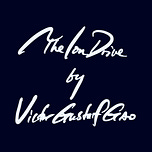Good evening.
In my January 4 update I observed that a few philosophies seem to wield outsized influence in today’s innovation hubs such as Silicon Valley, Seattle, and Beijing. I named two philosophers in particular: René Girard and his mimesis theory, and David Christian, who coined the term Big History.
Mimesis, in short, posits that the human proclivity to imitate others inevitably lead to destructive conflict, as illustrated in the Biblical story of brothers Cain and Abel. Peter Thiel, a prominent venture capitalist and former student of Girard’s at Stanford, extends the mimesis framework to ways to think about competition, value creation, and investing. In his book Zero to One, Thiel criticizes what he calls the ideology of competition:
We preach competition, internalize its necessity, and enact its commandements; and as a result, we trap ourselves within it — even though the more we compete, the less we gain.
Thiel further explains:
For Hamlet, greatness means willingness to fight for reasons as thin as an eggshell: anyone would fight for things that matter; true heroes take their personal honor so seriously they will fight for things that don’t matter. This twisted logic is part of human nature, but it’s disastrous in business. If you can recognize competition as a destructive force instead of a sign of value, you’re already more sane than most.
I had planned on an explainer on mimesis, but my research led me to a long-form essay by David Perell, one of the most prolific writers online. Perell’s essay, aptly titled Peter Thiel’s Religion, not only provides background on Girard, but also sorts through his intellectual collaboration with Thiel. I may still decide to provide my own extended treatment of mimesis in a future update, but for now I would simply point the reader to a job well done by another.
Instead, in today’s update, we explore Big History. As preamble, I am neither endorsing nor refuting the arguments advanced in Big History. Rather, my interest lies in unpacking what draws some of the most brilliant minds in business and technology to it. It is relevant because its followers deploy their wealth, influence, and resource according to its principles to shape our society.
To start, Big History is a multidisciplinary field of study that deviates from conventional history in its cosmic time scale and contextualization of human activity in cosmology and natural history. The study of human existence and its relation with the cosmos harkens back to ancient sages such as Lao Tzu and Kapila and early modern science giants such as Nicolaus Copernicus. More recently, however, its most vocal exponent has been David Christian, Distinguished Professor of History at Macquarie University in Sydney and co-founder of the Big History Project with Bill Gates.
In a 2018 introduction to Christian’s book, Origin Story, Gates writes:
Big History tells the story of the universe from the big bang to the first signs of life to today’s complex societies. It shows how everything is connected to everything else, weaving together insights and evidence from across disciplines into a single, understandable narrative.
According to Christian, to understand this narrative, rather than archeological samples of early farming or monastic archives of the deeds of kings, we are best off starting at the physical world and the biosphere. What is our natural world made of? What is its structure? What drives its change?
The answer: energy and information. Christian argues that the combination of energy and information is definitionally human progress. Here the Second Law of Thermodynamics, the tendency towards disorder in a closed system, plays the central role. Think of your desk. No matter how much you tidied it yesterday, unless you just cleaned up, it’s likely to now be a mess. The same applies to star systems and intergalactic space. This tendency towards chaos is also known as entropy.
Human progress, then, could be understood as our activities to reduce entropy. We make progress when energy is more efficiently converted to work, and when the information we gather improves in quality. If progress could be defined as the growth of human knowledge and wealth, and wealth broadly defined as the general ability to meet human needs and desires, then human history could be understood as a process of continual scientific exploration, technological development, and wealth creation.
Let’s unpack these concepts.
First, science is a tool of knowledge mining, a system of inquiry. At its core is a set of falsifiable hypothesis: statements we can prove or disprove after gathering evidence. Science primary explains natural phenomena.
Second, technology is grounded in science, but is not science. Rather, it’s a system of human activities to change nature, based on what science has taught us. For a system to qualify as technology, it must be both programmable and executable. Programmability is about information. It encodes our knowledge of how nature can be changed. Executability is about energy. When energy passes through our code, nature is changed.
Because technology revolves around human needs, technology and human needs cannot be viewed apart. To predict where technology is headed, we only have to look for where human needs are evolving.
And this brings us to wealth creation. Technology and economic growth are well-correlated because both are products of the same evolving human need. From early tribal production to current-day market capitalism, science, technology, and the markets have worked synchronously in promoting human progress, bringing order to chaos.
In Origin Story, Christian organizes 13.8 billion years of the universe according to key transition points defined by notable declines in entropy. He calls these thresholds:
Threshold 1: The big bang. Beginning at the beginning. As far as we know.
Threshold 2: Stars light up. Stars are born.
Threshold 3: New chemical elements. Stars forge matter.
Threshold 4: Earth and the solar system. Morsels of gas and rock form our home.
Threshold 5: Life on Earth. Life evolves, adopts, and thrives.
Threshold 6: Collective learning. Humans develop language.
Threshold 7: Agriculture. Farming sows the seed of civilization.
Threshold 8: The modern revolution. Change accelerates faster and faster.
Between the 7th and 8th thresholds is where things get really exciting. Energy and information reach a critical level that gives rise to three successive economic ages: the agricultural, the industrial, and the informational.
The agricultural age was based on solar power, which was a free resource that converts energy to matter via photosynthesis. The information density of the agricultural age was low, as farm products were not much more than photosynthesis enabled by human labor and some simple farming tools. That’s why no matter how smart a person was during this age, wealth creation was determined predominately via land ownership. The history of the agricultural age was a history of land control.
The industrial age was marked by mass production and transportation. Its main energy source was fossil: first coal then oil and natural gas. These were converted to energy through mechanical, steam, and electric machines. The behemoths of the industrial age were energy companies and firms that owned capital equipment.
The information density during the industrial age grew significantly, leading to a rise in demand of specialized skills. Institutions such as universities and trade schools emerged to meet this demand. The history of the industrial age was a history of machinery and fossil energy control.
We live in the information age. Its beginning was the invention of generalized computers. These machines allowed us to gather information far exceeding the previous eras. We then applied vast computing power to design, model, predict, and automate whatever we can. The history of our age will be about control over data and algorithms.
But beyond the relation between energy and information, we need to return to the dynamics between science, technology, and the economy to understand the immense interest of entrepreneurs and venture capitalists in Big History.
In his 2021 new year’s address to startup founders, former Microsoft President and founder of Y Combinator China Dr. Qi Lu introduces a brief description of how technology is purposefully forged out of science, whose product is known as emergent systems.
Dr. Lu explains (edit note: translation to English is mine):
How did science emerge? It actually started in antiquity. In Greece there was Aristotle, Archimedes, and others. But it was not cultivated systematically. The first systematic development of science happened during the Renaissance. At the time, there was a societal demand, and the demand reached a critical mass to attract a group of people to conduct experiments, organize universities, and engineers as a profession emerged. Subsequently, the scientific method evolved. Foundational science, especially the foundation laid by scientists such as Sir Isaac Newton, precipitated the mass dissemination and usage of science and technology in the West.
According to Dr. Lu, the third iteration of systematic development of technology was the modern research-driven university plus national labs. This development model was funded by the government, but driven by scientists. It started in post-WWII United States. At the time, there was actually quite a bit of controversy over whether to let scientists or the government determine research areas. In the end, the argument for scientists won, and it has worked extraordinarily well since, but the model continues to evolve. A good resource to better understand the thinking behind this model is a report named Science the Endless Frontier to President Franklin D. Roosevelt by Vannevar Bush, Director of the Office of Scientific Research and Development, commissioned in November 1944 and published in July 1945.
Fast forward to today, in addition to the research university plus national labs model, corporations such as Google, Facebook, and Alibaba serve as complementary forces, though focus tilts towards the commercial.
Of note, more recent startups such as DeepMind, OpenAI, and SpaceX are driven by much longer-term and more ambitious missions. Consequently, they move even faster than the better-resourced tech giants. Whether it’s breakthrough research in protein folding by AlphaFold, the language AI GTP-3, or new space contributions by SpaceX and Blue Origin, emergent systems are born at startups as much as, if not more than, an older generation of tech firms.
Finally, the market is the ultimate filter and optimizer for which technologies will do the most for human progress. That’s because the market measures the aggregated demand signals of a particular technology. With the right design such as fair and transparent rules, the market funnels scarce resources to their most productive use.
In the final chapter of his online course the Big History Project, Christian paints a nuanced picture of the future:
Oddly, it is easier to predict the very remote future, the future of the Earth and the Universe, because at this larger scale change is slower and there are fewer variables to calculate. The Sun will die in about 4 to 5 billion years, swelling until it gobbles up and destroys the Earth.
Evidence from distant galaxies suggests that the Universe's expansion is accelerating, which in turn suggests that galaxies will slowly become more and more isolated until, eventually, all stars burn out. The Universe will then fill up with dying stars, which will get pulled into the enormous gravitational field of black holes. The Universe will become simpler and simpler.
In other words, entropy will eventually win, and it will be lights out everywhere. If this strikes you as a grim end, Christian goes on to remind us:
This will not occur for billions of years. For now, we are living in the Universe's youth, in which we have abundant energy to generate new, complex, and interesting objects, such as ourselves!
At present, we can see both dangerous trends, such as global warming and the continued existence of nuclear weapons, as well as positive trends, such as increased collaboration in dealing with climate change, a slowing in population growth, and an acceleration in our knowledge about the biosphere.
Can we imagine a future largely free of conflict, disease, and degradation, one in which some humans may even begin to migrate to other worlds as our Paleolithic ancestors migrated to other continents? Or are we in danger of undermining the foundations of today's world with vicious conflict over scarce resources? The answers will depend on decisions made by the generations of humans that are alive today.
If you’ve been forwarded this update, please consider subscribing below. Thank you for your support.
From Aspen, Colorado 🇺🇸
Victor













Share this post